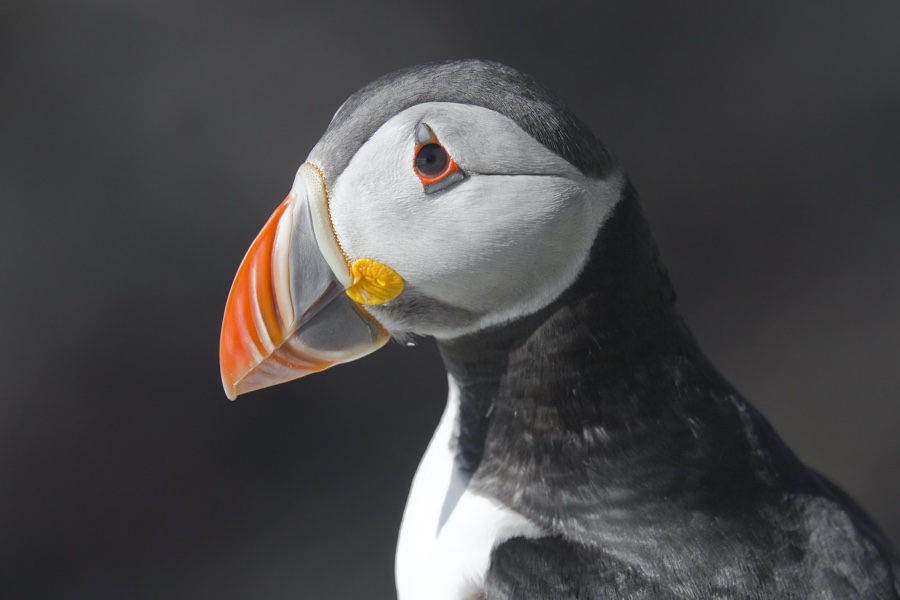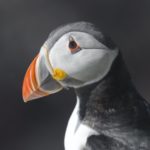
The Atlantic Puffin (Fratercula arctica)
The Atlantic Puffin (Fratercula arctica) occurs across the North Atlantic from Canada to Norway and south to Spain. It is distinctly colored with black above and white below and a huge multi-colored, triangle-shaped beak, an appearance that causes the bird to be sometimes called the “clown of the sea.” Its small, rounded wings, used energetically in flight to keep it aloft, propel it in a very graceful, undulating motion while swimming under water.
Gregarious by nature, these birds occupy sparsely vegetated islands and steep, rocky, coastal sea cliffs, where they breed during the summer months in colonies numbering in the thousands. Outside of the breeding season, the birds lead solitary lives on the open ocean, bobbing on the surface of the water and diving up to 200 feet in pursuit of fish (sand eel, herring, capelin, hake and cod). Additionally, they consume many types of crustaceans (such as shrimps and copepods), as well as mollusks and marine worms.
Puffins begin breeding at the age of five years and often have the same mate each year. Once breeding age is reached, the season commences with courtship and pair bonding. The elaborate courtship includes swinging their bills from side to side and repeated
bill-clashing. The nest site is usually a shallow burrow placed in a natural crevice or under rocks. It is excavated by both sexes (the male doing most of the excavation) and is typically lined with grass, twigs, and feathers. One, rarely two, dull white eggs are laid and incubated by both adult birds for 36 – 45 days.
Both parents participate in caring for the young puffin (hatched in an altricial state and covered in dark gray down), feeding it fish carried in their bills (sometimes 10 – 12 fish are caught and carried at a time). The fish may be fed to the young directly at first but are later dropped in the nest for the young to pick up. The young usually leave the nest 38 – 44 days after hatching, typically leaving at night. After leaping from the cliff nest to the water below, they head out to sea, remaining there until they become sexually mature.
For more on the Atlantic Puffin, see these fine sites:
Audubon
The Cornell Lab: All About Birds
eBird
Wikipedia


Comments are closed